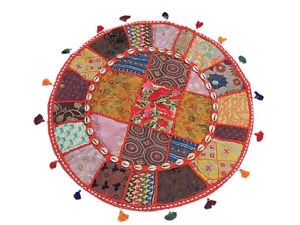Share
Pin
Tweet
Send
Share
Send
We sew a bag a la Furla
For those who were interested, but did not find pictures: unfortunately I can’t fix anything - everything was loaded for a long time (even before at some point the site administrators decided to "improve" it and delete apparently incorrect pictures) from the old computer, and he died, taking everything with him. I can only advise you to carefully read the description of sewing - there are most of the parametersFor work, we need:
- About ¼ cow skin;
- 1 spool of thread for the skin (for example - Aurora Tytan 60E, 120m);
- 1 needle for skin No. 90;
- Glue for skin (you can take the "Crystal Moment");
- 1 metal zipper 45 cm;
- Metal ruler;
- Clerical (or construction) knife;
- A simple pencil with a soft or semi-soft stylus;
- White (!) Eraser;
- Lining flap
- A sheet of cardboard;
- Stationery paper clips;
- Adhesive tape 2.5–3 cm wide;
- A cutting rug for a patchwork (60x45cm) or for lack of some board (I had a shelf from an old wardrobe for ejection), which will not be a pity - there will be traces of a knife !;
- And most importantly - PATIENCE :).
We will cut on the front side. No allowances !!!
From thick paper we make patterns.
Getting to the cutting.
First of all, we put on the table a protective board (or a cutting mat). Put the skin on top.
Fasten the finished patterns to the front of the skin with a few pieces of adhesive tape. In order for the cut out details to have even edges, we use a metal ruler and an office knife. We put the ruler over the pattern, edge to edge, and resting the blade blade against the edge of the ruler, carefully make an incision on the skin (together with adhesive tape). In this case, the cut should begin and end EXACTLY at the corners of the pattern, so as not to spoil the rest of the skin. After the part is completely cut, we separate it from the skin and remove the remaining tape.
I draw your attention to the fact that both parts of the main part of the bag are covered WITHOUT a mirror image - they are absolutely identical!
Sewing.
Actually, the tailoring itself will be much less than gluing.
- First of all, we prepare the handles and side pocket. First, we carefully coat 2 parts of the handles from the wrong side with glue so that they stick well along the perimeter and the glue does not protrude. We give the glue to grip (about 1 minute) and gently, combining the edges, glue on top the second halves of the pens with the wrong side to the wrong side. We put the handles on a flat surface (otherwise the handles will turn deformed) and let them glue firmly.
- At this time, apply glue to the “front” wall of the side pocket from the inside out on 3 sides with a narrow (about 0.5 cm) strip, give the glue to grip and apply it to the FACE side of the “back” wall of the side pocket. In the figure, the places where the parts of the pocket are aligned are highlighted in red.
- While the handles and pocket are glued together with a simple pencil, on the main parts of the bag we mark the lines for sewing on the straps for the handles (the top line is 5 cm from the top edge of the bag; mark length is 18 cm). Put the marks barely noticeable, because the pencil is poorly erased from the mezra.
- Pens and pockets are edged to the edge. In this case, set the maximum thread tension on the machine!
- We prepare strips for pens. On the wrong side of the side pocket, mark the border of the one-piece bar. Lubricate both strips from the wrong side with glue, as shown in gray in the figure. We give the glue to grasp and attach the edges of the handles to them with the side that will then be like the inside (see photo of the finished bag). We fasten with office paper clips and leave to stick together.
- Prepare the bottom of the future bag.On the underside of the bottom plank we apply glue, let it grab and apply long sections of the bottom to the underside of the main parts of the bag (shown in yellow). We wait 10 minutes and attach the bar to the slices (see photo of the finished bag).
- Glue the handles. Thoroughly lubricate the straps of the handles with glue, give them a grip and apply them to the wrong side of the main part of the bag, lay it all on a flat surface and put something heavy on top of the straps. The better you glue and glue it, the better the sticks will stick and the easier it will be to later rebuild them. We build strips for long sections. The pocket remains unstitched.
- Diagonal pocket. The most time consuming detail. First, with a zipper on the front side, with a simple pencil we make the marking with barely noticeable lines. The layout is a rectangle with sides of 1.7 cm by 28 cm. The zipper teeth should be inside this rectangle.
- Glue the ends of the zipper to the short sides of the outlined rectangle. We wait 10 minutes and we finish the endings from one edge. We cut off the excess lightning. We cut both parts of the diagonal pocket along the line as shown in the figure. We do not throw away the scraps - they will still be needed. We put glue on the sections of the pocket (marked in pink in the figure), let us grab and glue to the long sides of the rectangle marked with a zipper. We build to the edge.
- Turn the diagonal pocket over with the wrong side up. On one of the halves, on 2 sides, we apply glue (about 1 cm strip) as shown in green. Let's grab it and glue it on the previously trimmed strip. We are waiting for 10-15 minutes. Now you need to adjust the size of the pocket. When unfolded, it should be on the short side (taking into account the glued strips) - 33 cm, on the long side - 58 cm. These dimensions must be observed if you want the diagonal pocket to not stick out over the edges of the bag and fit exactly diagonally inside it. After that, on the other half of the pocket, on 3 free edges, apply glue (1 cm strip), give it a hold and glue to the first half. We give it a stick and we build it to the edge.
- Assembly bags. First we glue (a strip of glue about 0.5 cm) a diagonal pocket to the short sections of the "shelves" of the bag on the wrong side (marked in blue in the figure), carefully fitting the sections to each other, fasten with stationery clips and leave for a couple of hours. Then we apply a narrow strip of glue on short sections of the sidewalls from the wrong side (marked in brown in the figure), let us grab and glue to the short sections of the bottom. We fasten it with office clips, wait half an hour, on the front side of the sidewall we build it to the edge. At the same time, we start the line from the corner of the bottom and sidewall and end without reaching 0.5 cm to the end of a short cut of the sidewall. In the same way we connect the long edge of the sidewall and the short edge of the “shelf”.
- To stiffen our bag, we make a special insert at the bottom. We cut a rectangle from the cardboard with sides 29 cm by 14 cm. We sew it with a lining cloth, for beauty we cut it off at a distance of 0.5 cm from the edge and put it on the bottom of the bag.
- Eraser erase marks.
All! Furla bag is ready!
Dare and in no case be afraid of working with the skin. It is very simple - just start and see. I hope you get much better than mine.
Share
Pin
Tweet
Send
Share
Send



